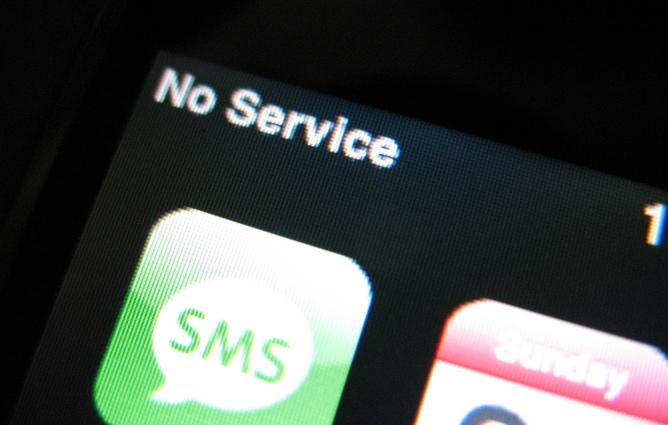No signal in a city or on a train? Here’s why.
According to a RAC survey more than 4,500 miles of roads in Britain are out of range of any mobile phone network, while 14,500 miles lack any high-speed 3G coverage. In a rich developed country like the UK mobile phone coverage might be seen as a basic necessity, but in many areas it’s still lacking.We have become so accustomed to being connected everywhere and anywhere that when we get “no signal” it’s frustrating, and we feel uncomfortable about being disconnected. What’s really frustrating is that signal can disappear not just in rural villages or country roads, but inside buildings in towns or in the middle of capital cities, where we’d expect it to be strong.The mobile phone network is a very complex and expensive infrastructure, with a huge number of subscribers. There are around 90m subscribers in the UK, more than there are people, and an estimated 7 billion worldwide. Alongside the internet itself, it is one of the most expensive and generally reliable electronic systems on Earth.
Mobile phone networks use the microwave part of the electromagnetic spectrum, between 800MHz and 2.2GHz. These microwaves spread well in free space, but not over very long distances, or through walls or thick barriers, and very poorly around corners. With that in mind, it becomes a bit more clear why we find ourselves with “no signal”.
In the city
A city has a vast number of surfaces that can reflect, absorb, and scatter microwave transmissions, often in an unpredictable way. What’s needed is the proper placement of transmitting base stations so that the signal is repeated and passed on. Out in the open in good conditions this is no problem. But in densely built-up areas, particularly those with skyscrapers or other enormous buildings often made of reflective materials, “dead zones” appear, where microwaves are blocked.
Something similar happens when we walk inside a building. The microwaves have to penetrate many walls to reach our mobile phone’s antenna, each of which absorbs part of their energy leaving the signal weaker until it fades away entirely.
In the countryside
We might accept that full coverage deep inside a building is not an easy matter, but what about when we’re out in the open countryside with no obstacles around? The answer is that they’re are simply not enough base stations to provide complete coverage to the most modern transmission standards (such as 4G), or even at all. Mobile phone infrastructure is erected by commercial companies, and in areas where there are few people it is difficult to sustain the investment.
The same problems affect mobile phone signal when travelling by train or on many roads – there are not enough base stations sufficiently close to the railway to provide the minimum level of signal our phones require. Coverage is patchy and discontinuous, and often base stations are very far from each other or support only older transmission technologies such as 2G or GPRS. These struggle when the mobile phone that is trying to connect is on a train travelling at 140mph, forcing the mobile to switch from one base station to the next, making a disconnection more likely. Even the metal structure of the train itself acts as a shield, protecting the phone from the microwave transmissions.
No service, no signal. dbrulz, CC BY-SASignal everywhere?
In principle dead zones could be easily eliminated by blanketing the country with antennas. It wouldn’t fully resolve the lack of signal deep in buildings, but connections outdoors would be assured. But of course it would cost billions – an estimated £5 billion to cover 90% of the UK. The network is designed to provide coverage to the maximum number of people, rather than the maximum area. Inevitably this means cities and towns are generally well served while more rural areas suffer poor coverage.
However, wireless communications are moving towards the higher frequency millimetre spectrumbetween 30-100GHz (known as the V-Band, E-Band or W-band), which could be the solution.
Base stations need to be connected to the core network in order to pass on messages from mobile phone handsets to the rest of the network. This is usually through high-capacity fibre-optic cables, but this is very expensive and not always feasible due to local constraints.
The microwave spectrum currently in use hasn’t the capacity to carry all the data from base stations to the rest of the network, but millimetre waves offer a high-capacity wide band that could replace the need for fibre-optic cabling with a purely wireless connection. That means instead of long, expensive runs of fibre-optic cabling dug into the ground, more distant base stations can be connected via compact millimetre wave transmitter/receivers to more central base stations, which are then connected to existing fibre-optic network connections to the core network.
This approach would cut infrastructure costs enormously, which means it would be cheaper and so more likely that companies would install better coverage in rural and under-served areas. It’s not yet5G future speeds, but it’s certainly a solution for the digital divide between town and countryside – and perhaps the end of the dreaded “no signal”. Source:theconversation





